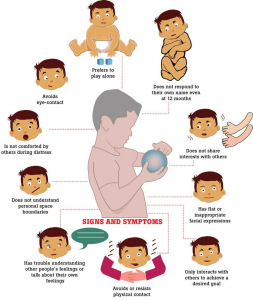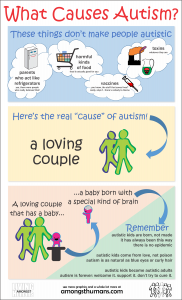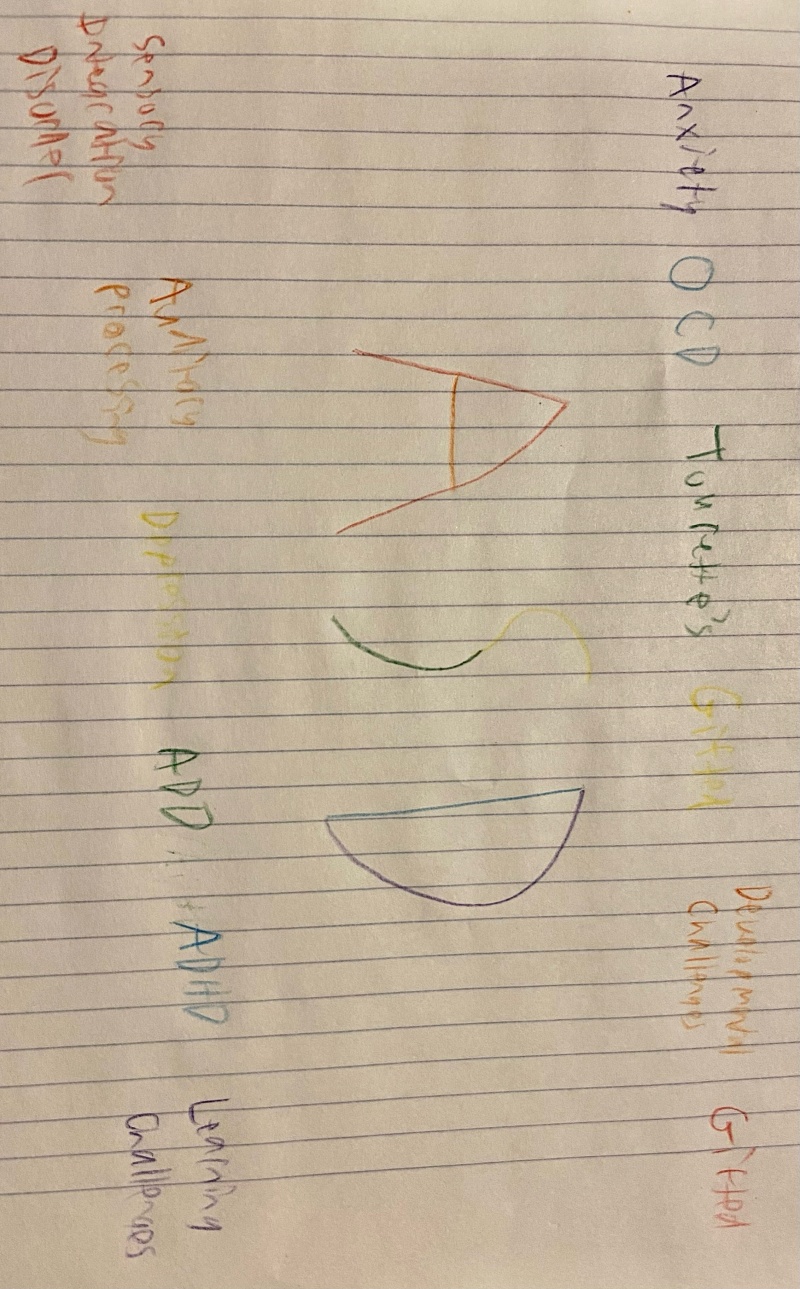Autism Spectrum Disorder (ASD) has seen a rise in diagnosis, but unfortunately it is still not well understood due to how broadly it impacts any given individual. This article will break down how we currently understand ASD and some common misunderstanding about the disease.
What is ASD?
Autism Spectrum Disorder has taken on a different meaning than what was traditionally consider autism in the past. In the past it has been referred to by many names: autism, Asperger’s syndrome, childhood disintegrative disorder, and pervasive developmental disorder. These terms have all been consolidated under ASD to designate that the concept of autism is both unique to each individual and falls on a spectrum of levels, although Asperger’s syndrome is still used occasionally to describe mild ASD. The official standard definition of ASD according to the Mayo Clinic is “… a condition related to brain development that impacts how a person perceives and socializes with others, causing problems in social interactions and communication.
Early Signs of ASD
There are two major categories to identify autism that take into account how different each case is, social communication and behavioral patterns. Social communications indicators are as follows:
Fails to respond to name
Resists physical contact and prefers solitude
Poor eye contact and facial expression
Doesn’t speak or speaks slow, missing vocabulary
Won’t participate in conversation
Speaks with abnormal rhythm or tone (Singing or robot-like)
Repeats phrases without understanding them
Doesn’t understand questions/directions
Doesn’t express or understand emotions
Behaves abnormally in social interactions (passive, aggressive, or disruptive)
Doesn’t understand nonverbal cues
Indicators that are patterns of behavior may include:
Performing repetitive movements (rocking, spinning)
Performing self-harming activities (biting, headbanging)
Problems with coordination or odd movement patterns, stiff or exaggerated body motions
Is fascinated with details but ignores the overall purpose or function of objects
Is sensitive to light, sound, or touch while ignoring pain or temperature
Doesn’t engage in make believe play
Fixates on objects or activities with abnormal intensity
Has hyper specific food preferences
Autism is normally found early in development, talk to your pediatrician if you have any concerns. The diagram below provides a more simplified guide to generic autism symptoms.

What Causes ASD?
The short answer is that there are many potential causes, and few certain causes are known for sure:
Genetics- Syndromes such as Rett syndrome or fragile X syndrome can be indicators of ASD. There is a chance of genetic mutations or non-typical expression of brain related genes that can cause ASD. Some of these changes are heritable, while others are random.
Environmental factors- it is currently unknown if factors such as viruses, medications, pregnancy complications, or air pollutants impact ASD
Please note that vaccines DO NOT cause autism, this information was gathered from a faulty study.
It is also important to note certain risk factors:
Males are four times more likely to have ASD
Families with an ASD case will be more likely to have another child with ASD
Babies born before 26 weeks of gestation may be at higher risk
There is a potential connection between parents that are older and ASD
Below is an important image about autism and its cause

ASD Diagnosis and Treatment
ASD is challenging to diagnose, these are the most likely steps a physician will take:
Observe the child and learn about how their social interaction, communication skills, and behaviors have changed
Give tests covering hearing, speech, language, developmental level, and social/behavioral issues
Present structured social and communicative interactions to be evaluated
Use the DSM-5 as a guideline (a tool used in diagnosing mental issues that are not visible to the eye)
Work closely with specialists
Perform genetic testing based on the above info
While there is no direct cure, there are ways to help make sure people with ASD can live a “more normal” life to the best of their abilities:
Behavioral and Communication Therapy- designed to help teach children with ASD to interact with the world and people around them
Educational Therapy- highly structured education is very helpful for children with ASD
Family therapy- families can learn how to best support their children with ASD
Other therapies- depending on needs, children with ASD can benefit from speech therapy, occupational therapy, physical therapy, and working with a psychologist.
Medications- certain medications can aid in managing symptoms, such as controlling hyperactivity, anti psychotics for behavioral issues, and antidepressants to control anxiety.
Doctors can also help manage medical and mental health issues such as: epilepsy, sleep disorders, limited food preference, stomach issues, anxiety and depression. Hopefully this information helps dispel some myths about ASD and provides useful information for anyone who may need it. For more information
Feature art created by me
